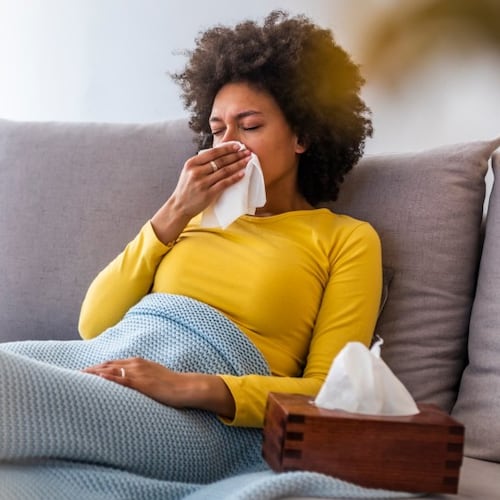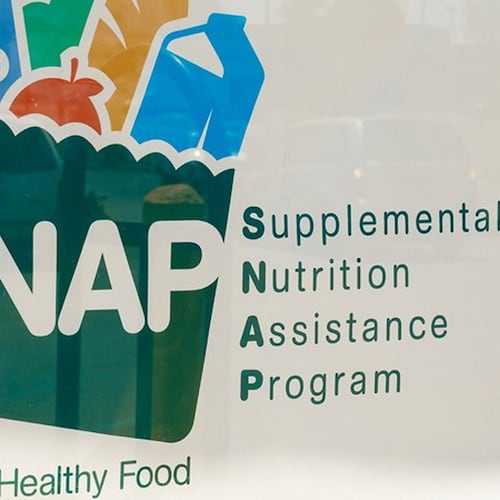The summer of 2024 is already bringing soaring temperatures to Georgia along with something else that has become almost a given: a seasonal COVID-19 wave.
Cases are growing or likely growing in 39 states including Georgia, according to the Centers for Disease Control and Prevention, signaling that a summer bump is underway. The CDC no longer tracks COVID case numbers but estimates the trend of the virus spread based on emergency room visits.
Levels of virus found in wastewater samples, often an early signal of rising COVID cases, have also been rising in Georgia according to CDC surveillance. But it’s not clear if that means cases will continue to surge.
And while the rise is not too surprising with people traveling and gathering indoors where it’s cooler, health experts and doctors expect this season’s illnesses to be milder than some past versions of the virus. But the latest iterations of the ever-evolving coronavirus seem to be more contagious.
Dr. Luke Lathrop, chief medical officer at SmartMED Drive-Thru Medical Care in Roswell, said he has seen a “small but notable rise” in COVID cases in recent days. Of the roughly 30 patients seen there Monday, seven tested positive for the virus. That’s up from one or two a day in recent months.
Credit: custom
Credit: custom
Symptoms from the latest variants circulating are familiar and include sore throat, runny nose, coughing, head and body aches, fever, fatigue, and in more severe cases, shortness of breath.
For many people who have already had COVID, a reinfection is often milder than an earlier case. But people who are 65 and older, pregnant or immunocompromised remain at higher risk of serious complications from COVID. Lathrop said he has sent a few older patients with COVID to the ER due to their low oxygen levels.
“I think the early predictions from the experts and the CDC were right on in that it seems to be ending up like being another influenza where there will be some seasonality to it,” said Lathrop. “The symptoms overlap and some people get very ill. And for some people, it’s a mild cold.”
“So it’s almost like a new flu out there and it’s not going away. We are going to have to deal with it,” said Lathrop. “It affects everybody in different ways.”
While ER visits for COVID increased 14.7% in the past week nationally, they still only account for 0.7% of ER visits, according to CDC. In Georgia, the share of COVID patients in the ER is even lower.
Since April, less than 0.5% of emergency department patients in Georgia were diagnosed with COVID. That’s in line with last year’s trend, which saw an increase during the months of July and August.
This is a far cry from past summer peaks. During last summer’s peak, 2.5% of emergency department patients were diagnosed with COVID. COVID accounted for 3.5% of emergency patients in 2022, and 7% during the summer of 2021.
Experts say the COVID vaccines still provide some protection but their protection wanes over time. The latest variants have mutations thought to make it easier for them to evade immunity among people who received the most recent updated vaccine or who were infected several months ago.
Credit: Contributed
Credit: Contributed
Dr. Jayne Morgan, executive director of health and community education for Piedmont Healthcare, said the new JN.1 variant is “both stealthy and contagious, but overall the symptoms remain mild.”
This could result in more infections with mild symptoms and with many of these illnesses being ignored or dismissed as another virus. While some will continue to be hit hard by the virus, the upside to a mild yet contagious virus is that it could boost immunity levels in the general population, she said.
The CDC is recommending everyone 6 months and older get one of the new COVID vaccines when they become available this fall.
At a Thursday meeting at the CDC in Atlanta, infectious disease experts unanimously recommended the updated vaccines for Americans age 6 months and older. The CDC director signed off on the recommendation later in the day. The shots are expected to become available in August and September.
Officials acknowledged the need for shots is not as urgent as it was only a few years ago. Most people have some immunity from past infections, vaccines or both.
Doctors say vaccines remain the best way to protect against the worst outcomes of COVID, and are especially important for older people and others at higher risk of severe illness.
For now, the public’s interest in updated COVID vaccines has been cool. According to the CDC, as of May 11, only 22% of adults reported having received an updated 2023-24 vaccine since September 14, 2023.
In a new poll of 1,000 likely voters conducted by The Atlanta Journal-Constitution this month asking how much of a threat the coronavirus poses to the nation, 47% of respondents said it was “a minor threat,” while only 13% considered it “a major threat.”
In addition, health officials say getting the vaccine formula and production schedule just right can be tricky.
The Food and Drug Administration recently decided to request drug makers update the COVID vaccines to target the KP.2 strain, a descendent of the JN.1 variant that started circulating widely in the U.S. over the winter months. The announcement came a week after an FDA advisory panel voted unanimously to recommend the fall vaccine be designed to target the JN.1 variant or one of its descendants.
Dr. Peter Marks, director for FDA’s Center for Biologics Evaluation and Research, said last week during a discussion about seasonal flu and COVID vaccines that his agency and the CDC work to follow the evolution of the coronavirus in order to update the COVID vaccine formula.
“The optimal protection is making sure we get closest to what is actually circulating,” he said.
Early this year the JN.1 (omicron) variant was circulating, but as the FDA and CDC got closer to the time when they needed to choose a strain to include in this fall’s vaccine, other descendants of JN.1 began to appear.
Now public health experts are hoping to formulate the shot to target one of those variants — KP.2. But even that variant is already being outpaced by another offshoot, KP.3.
And then, by the time fall rolls around and the COVID boosters are made available, the updated vaccine might have lost some of its effectiveness against the mutating virus.
Despite these difficulties, public health officials say a fall rollout of the vaccine still seems to make the most sense.
It’s anticipated that COVID will, over time, settle into a more traditional seasonal pattern in line with other respiratory viruses, with seasonal peaks in the fall and winter months, according to Morgan.
But the reality is because the coronavirus evolves so rapidly and doesn’t retreat as weather warms, immunity to COVID may not last until the following fall and winter season, “lending to the current summer increases that we see,” she said.
Data reporter Stephanie Lamm contributed to this article.
Should COVID patients still isolate?
So you’ve got COVID and aren’t sure whether to stay home? The Centers for Disease Control and Prevention in March updated its guidelines on when people can return to their normal activities after any viral illness such as the flu or COVID.
You can go back to your normal activities when, for at least 24 hours, both are true:
o Your symptoms are getting better overall, and
o You have not had a fever (and are not using fever-reducing medication).
When you go back to your normal activities, take added precautions over the next 5 days, such as taking additional steps for cleaner air, hygiene, masks, physical distancing, and testing yourself when you will be around other people indoors.
o Keep in mind that you may still be able to spread the virus that made you sick, even if you are feeling better. You are likely to be less contagious at this time, depending on factors like how long you were sick or how sick you were.
o If you develop a fever or you start to feel worse after you have gone back to normal activities, stay home and away from others again until, for at least 24 hours your symptoms are improving overall, and you have not had a fever (and are not using fever-reducing medication). Then take added precautions for the next 5 days.
About the Author
Keep Reading
The Latest
Featured





